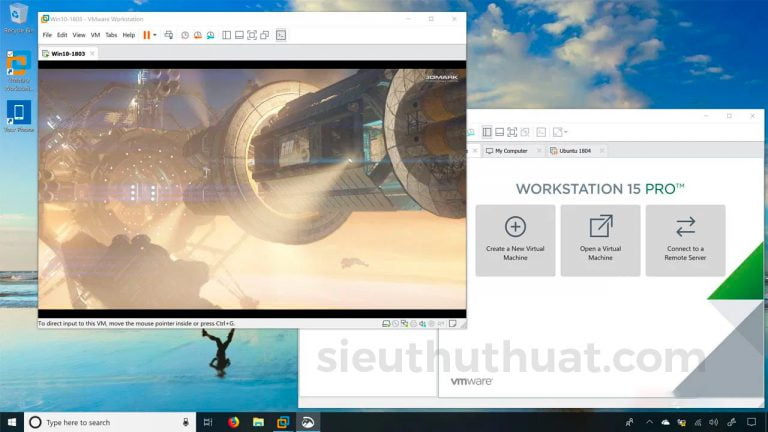
After doing that, your cursor will focus on your main OS, and you'll be able to use it.įirstly, we need the installation file of VMware Workstation Player 16. When working on a VM, you'll need to return to your main OS often, and in these times, you can hit CTRL + ALT combination on your keyboard. When using a virtual machine, you need to left-click on its screen to activate and make accessible it. 2 GB RAM minimum (4 GB RAM recommended).1 GHz or faster 64-Bit CPU (2 GHz recommended),.If you use virtual machines for everyday purposes, VMware Workstation Player will be the most suitable solution for you.Īfter this introduction, let's start the guide with the download step. Although VMware is a paid software, it has a free version for non-commercial use. This allows you to run any application that runs on the supported guest operating systems, including Microsoft Office, Adobe Photoshop, Apache Web Server, Microsoft Visual Studio, Kernel debuggers, Firewalls, VPN software and much more.In this guide, I'll show you how to install VMware (actually its full name is VMware Workstation 16 Player) on Windows for free legally. VMware Workstation Pro is the equivalent of a full PC, with full networking and devices - each virtual machine has its own CPU, memory, disks, I/O devices, etc.

What types of applications can I run in a virtual machine?Īny application that will run on a standard PC will run inside a virtual machine on VMware Workstation Pro. VMware Workstation Pro installs onto the host operating system and provides broad hardware support by inheriting device support from the host. The VMware virtualization layer maps the physical hardware resources to the virtual machine's resources, so each virtual machine has its own CPU, memory, disks, and I/O devices, and is the full equivalent of a standard x86 machine.


VMware Workstation Pro works by creating fully isolated, secure virtual machines that encapsulate an operating system and its applications. Windows 7, Windows 8, Windows 8.1, Windows 10, Windows Server 2008, Windows Server 2012, Windows Server 2016, Windows Server 2019


 0 kommentar(er)
0 kommentar(er)
